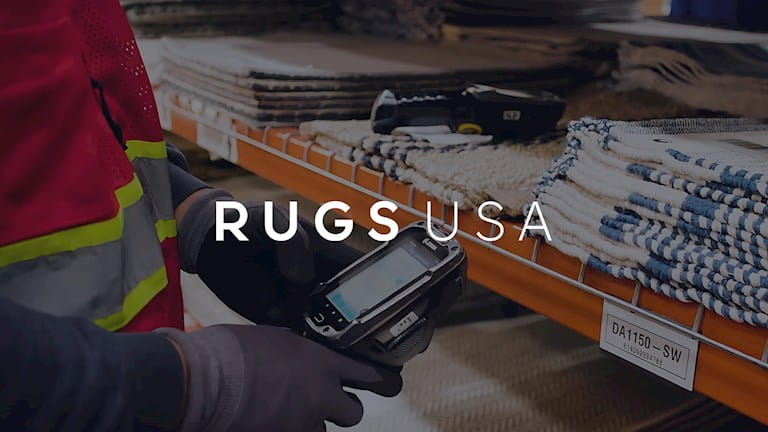Healthcare Services Provider
Standing up a new digital experience and product development organization in one year
Our Impact
A stellar digital experience does more than increase the bottom line for a healthcare organization. It improves patient and clinician engagement while leading to better health outcomes. Our client, a healthcare payer and services provider, saw an opportunity to enhance their ability to provide digital experiences by developing internal product capabilities.
To that end, West Monroe designed a personalized digital platform to consolidate disjointed solutions. We also helped align executive leadership on their vision to reimagine the clinician experience, identify high-value opportunities that reduce clinician burden, and design integrated experiences—all backed by viability, feasibility, and desirability analyses. Together, we set the foundation to design, build, and launch new digital products.
Projects:
- Aligned executives on the key outcomes of the vision work, refined their understanding of the clinician experience, and defined a future state roadmap.
- Designed an integrated and personalized digital platform to consolidate disjointed solutions—providing better experiences for patients and clinicians.
- Reimagined the clinician experience and recommended a streamlined solution that expedites clinician access to payer information.
1 year:
from ideation of the digital operating model to MVP
25%:
increase in Medicare STAR Ratings
1 hour:
potential medical assistant time saved per day
Part 1: Unifying the digital experience: From ideation to minimum viable product in under a year
The Full Story
The Challenge
The demand for better experiences and tools rises as digital products permeate more areas of consumer life. Our healthcare client needed to create an integrated and personalized consumer experience to meet those kinds of expectations.
Their goal was to consolidate disjointed digital platforms in order to improve data sharing across the organization and provide better experiences for their patients and clinicians. Data sharing was essential for adding personalization that improved constituent engagement and patient outcomes.
We helped turn our client’s broad vision into a clear, executable product strategy. To set up the foundation for change, we removed departmental siloes, designed their digital operating model, and established the governance needed to manage the client’s portfolio.
An Undeniably Different Approach
We wanted to help the client realize value faster and avoid missteps. The prep work we did at the outset was vital to reaching that goal—assessing more than 160 digital assets, scoring them, aligning them to customer journeys, and prioritizing them.
How did our approach help this multi-billion-dollar payer and provider organization build an integrated, personalized digital experience?
- Clinician empowerment. We focused on putting the power in the hands of the clinician and avoiding the payer’s need to be at the center of that process. The provider could then equip its members with the tools needed to identify their coverage details, find the care they need, and use it.
- Multidisciplinary expertise. Several teams integrated themselves within the client’s organization to accelerate the project and spark a cultural shift toward digital. These teams consisted of members with product development, product engineering, health payer, and operations experience.
- Planned rollouts to ensure an effective roadmap. The payer’s digital product organization had lots of red tape, including stakeholder commitments and regulations. We had to factor in client and industry-specific regulations, regulatory filing dates, and sales deadlines. To adapt, we used a rollout strategy that systematically implemented features—while maintaining compliance along the way.
- Developed a dynamic digital product management roadmap. Payers are typically five to 10 years behind most organizations, whether it's finance, retail, or another sector. By helping the client develop a digital operating model as well as a payer-specific product model, we aided them in transforming how they go to market and serve and engage their consumers.
Real Results
Our client went from ideation to minimum viable product (MVP) in just one year. Using agile development methodologies, we were not only able to provide a long-term strategy but also develop a product that was driven by it. By getting their MVP to market quickly, we helped them replace a digital experience that was purely transactional and lacked meaningful engagement. As a result, we created a single ecosystem that delivers a consistent and integrated experience while eliminating departmental siloes.
Digital transformation opened the way for the client to provide a customizable experience—putting power in the hands of clinicians and equipping patients with digital tools. We’re confident that increased patient engagement through curated tools will lead to better patient outcomes, ultimately improving user health.
Part 2: Tackling the digital clinician experience leads to a 10% reduction in denials
The Full Story
The Challenge
Like most healthcare organizations, our client was experiencing escalating administrative costs. Further complicating matters was a lack of tools to gather data insights that drive action. The client came to us to reimagine the clinician experience and deliver a streamlined solution that expedites clinician access to payer information.
Our client had a noble goal: improve the interactions between payers and clinicians. But tackling burnout, a growing administrative workload, and limited payer data at the point of care was no small task. We helped them create alignment around key outcomes and strategy, ideate potential solutions, and define a future state roadmap for reaching their goal.
An Undeniably Different Approach
Before starting this project, we already had a strong relationship with the client—providing indispensable insights into their current state. They also chose us for our proven product strategy, knowledge of the product and health industries, and pre-existing deep relationships within product organizations. How did this multidisciplinary expertise contribute?
Our healthcare and product teams helped break down departmental silos and align stakeholders on the vision—ensuring we completed the project on schedule. They were also crucial to every critical juncture of this project, including:
- Product visioning. We interviewed clinicians to identify pain points and reviewed clinician journey map research for inspiration. The resulting high-level concepts helped align executives to the vision—allowing us to define a product vision that was integrated with the clinician experience at the point of care and contributed to the client’s enterprise objectives.
- Product definition. The lack of data-driven insights was a challenge for our client. By leveraging analogous inspiration, analysis of clinician feedback, and executive interviews, we were able to base the product definition on reliable data. This data then helped us develop and prioritize MVP use cases based on frequency of pain points, total cost of care, time savings for clinicians, speed to market, and the level of differentiation offered.
- Product delivery & market assessment. Choosing the right delivery method is key to ensuring a successful and timely deployment. To that end, we evaluated the scope of each MVP use case and determined the best solution—i.e., in-house custom build, partnership with an existing vendor, or leveraging a commercial, off-the-shelf solution. We helped the client make this decision by analyzing their needs in the following areas: prioritization of resources, level of ownership, experience, differentiation, and speed.
Real Results
Our client wanted to help clinicians better serve their patients. The project achieved this goal in several meaningful ways. For example, partnering with a commercial platform built for payers will help solve critical pain points for 50% of network clinicians. The recommended solution will result in a 10% reduction in denials and a 25% increase in STAR scores.
Another notable impact happened during solutions discovery: We developed custom solution wireframes and prototypes that could save medical assistants up to three hours daily by reducing time spent looking for claims and clinical data. By creating executive alignment around the product vision, we were able to ideate scalable solutions that will save the client money while improving net promoter scores and patient outcomes.


.png?cx=0.5&cy=0.5&cw=768&ch=432&hash=8B42DD0A359FBFC9443564BC6589F22A)





